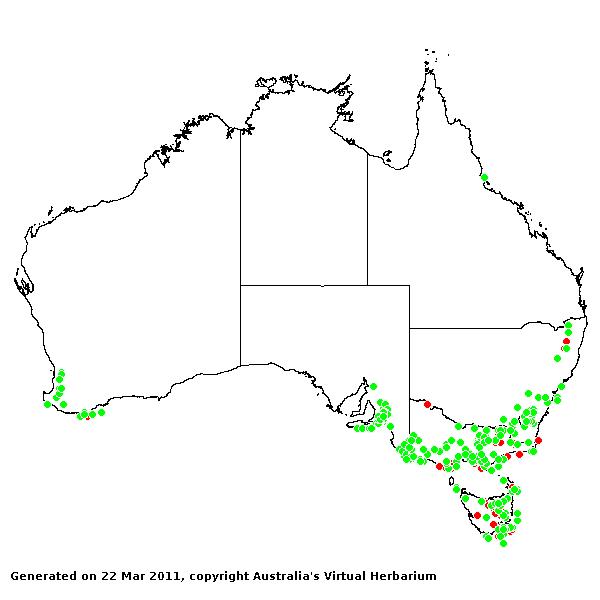Cynosurus* Sp. Pl. 72 (1753).
Derivation:. From Greek kuon (dog) and oura (tail), alluding to the resemblance of the inflorescence to a dog's tail.
Key references (keys and floras):. C.A.Gardner, Flora of Western Australia 1 Gramineae 44 (1952); J.P.Jessop, Flora of South Australia 4:1888 (1986); B.K.Simon, Key to Australian Grasses 89 (1993); S.W.L.Jacobs and S.M.Hastings, Flora of New South Wales 4: 605 (1993); N.G.Walsh, Flora of Victoria 2: 409–410 (1994); D.I.Morris, Student's Flora of Tasmania 4B: 206–207 (1994); E.Edgar and H.E.Connor, Flora of New Zealand 5: 92–94 (2000); D.Sharp and B.K.Simon, AusGrass (2002); J.P.Jessop, Grasses of South Australia 118–120 (2006); S.W.L.Jacobs, R.D.B.Whalley & D.J.B.Wheeler, Grasses of New South Wales, 4th Ed, 193–194 (2008); A.Wilson (ed.), Flora of Australia 44A: Poaceae 2: 344–346 (2009)
W.D.Clayton & S.A.Renvoize, Genera Graminum (1986), genus (117).
Naturalised. 8 species, from Europe, western Asia, northern and southern Africa. 2 species in Australia, WA, SA, Qld, NSW, Vic, and Tas. Also New Zealand.
Habit. Annual or perennial, tufted. Leaf blades broad or narrow. Ligule an unfringed membrane.
Inflorescence. Inflorescence paniculate, a spike-like panicle, contracted. Spikelet-bearing axes with heteromorphic spikelets (fertile spikelets mixed with and more or less concealed by sterile ones consisting of rigid, lanceolate, awned glumes and lemmas).
Spikelets. Spikelets laterally compressed, more than 2 flowered, with 1 fertile floret or with 2 or more fertile florets, shortly pedicelled or subsessile; with naked rachilla extension. Fertile spikelets disarticulating above glumes.
Glumes. Glumes more or less equal, shorter than adjacent lemmas or long relative to adjacent lemmas, awnless, keeled, similar (narrow, thin). Lower glume 1 nerved. Upper glume 1 nerved.
Florets. Fertile florets (1–)2–5. Lemmas similar in texture to glumes to decidedly firmer than glumes (papery or leathery), not becoming indurated, entire at apex or incised, awned, 5 nerved, hairy or glabrous. Awns 1, from a sinus or apical, non-geniculate, much shorter than body of lemma to much longer than body of lemma. Palea relatively long, tightly clasped by lemma, apically notched (shortly bifid), thinner than lemma (membranous), 2 nerved. Palea keels wingless. Callus short, blunt. Lodicules 2. Stamens 3. Grain small to medium sized, ovoid or ellipsoid, longitudinally grooved or not grooved, compressed dorsiventrally to terete. Hilum short, or long-linear (elliptic or linear). Embryo small.
Kranz Anatomy. C3.
2n = 14, 2 ploid, commonly adventive.
Habitat. Mesophytic, xerophytic. Meadows, disturbed ground. Species of open habitats.
Classification. Pooideae; Poeae.
Notes. Immediate relatives of the genus are uncertain, but the spikelets bear some resemblance to Lolium (Clayton and Renvoize, 1986).
Types Species. C. cristatus L.
Biogeographic Element. Clifford & Simon 1981, Simon & Jacobs 1990: Naturalised.


